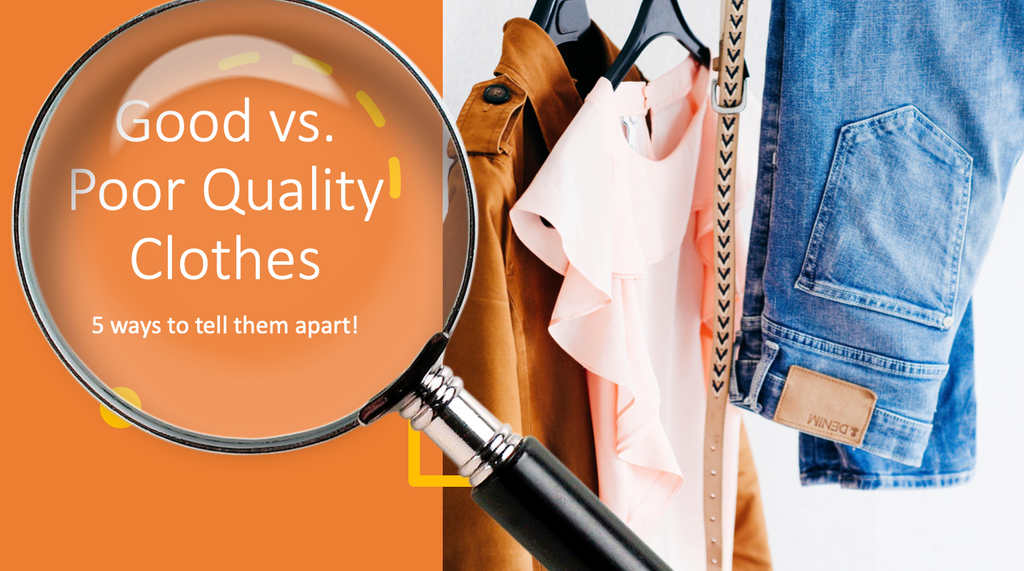5 Ways to Tell Good and Poor Quality Clothes Apart

There are SOOOOO many options out there when it comes to buying clothes, and the price points are all over the spectrum. We ll want things that last, but is the price the only indicator of quality? Not quite! There are other ways to tell the quality of the clothes. And you definitely don't need to be a fashion designer to tackle these 5 points:
1. Fit/Cut
A garment that fits well should trace your body shape, even it is supposed to be a boxy style. A bad fit like the one below does not have space for the breast and the garment gets wrinkly as you move. When it comes to cut, Any fabric has a direction, and a good cut is supposed to follow the direction of the fabric. However, some manufacturers might cut pieces in every direction of the fabric in order to optimize fabric consumption. The result is clothing with twisted seams as shown below.


2. Colors / Dyeing
This one we all know too well. Don't you hate when a vibrant pink shirt starts turning into something more like a white shirt that was washed with other pink clothes? Or a multi-colored dress that becomes more of a mesh-colored because the colors bleed into one another. Signs to look out for are hidden in the care instructions. If a piece of garment that asks "do not wash", stay away. Unless you really just want to wear it once or twice;)
3. Prints/Appliqués / Jacquards
If you are choosing between a plain colored shirt and a shirt with prints, the rule of thumb is to choose the plain colored one. Prints cost money, and the manufacturers will compensate for the costs by sacrificing other parts of the clothing, such as using thinner fabric or twisted seams. If you love patterns, jacquards are always a nice option, as the motif is woven into the fabric rather than printed on top of the fabric.
4. Fabrics/fibers
In general, you want a tightly knitted or woven fabric. If you can push the weavings around with your finger, it is probably too loose. A denser fabric will also fall nicely, which helps if you are buying clothing online.
Natural fibers: cotton, silk, linen, and wool
Naturally derived fabrics: modal (better than cotton), viscose (made from wood), and tencel (made from bamboo)
Synthetic fabrics: acetate (not breathable), rayon (a substitute for silk), nylon, acrylic (a substitute for wool), polyamide, elastane/spandex (what makes your clothes stretchy)
Synthetic fibers are chemically derived, which does not feel the best on your skin but they are more stable than natural fibers. All-natural fabrics are not a guarantee of great quality nowadays either. Ever had a pure cotton shirt that shrunk into kids size clothing for you? Mixed synthetic and natural fibers could be a good combination.
5. Sewing quality / Stitching / Threads
A good place to inspect is at the hems. The seams should be flat on the fabric and look clean. On high-quality garments, most seams are hidden so that they do not irritate your skin.
Check out Justine's video below for her full explanation on clothing quality!
Source: Justine Leconte Official
0 comments
